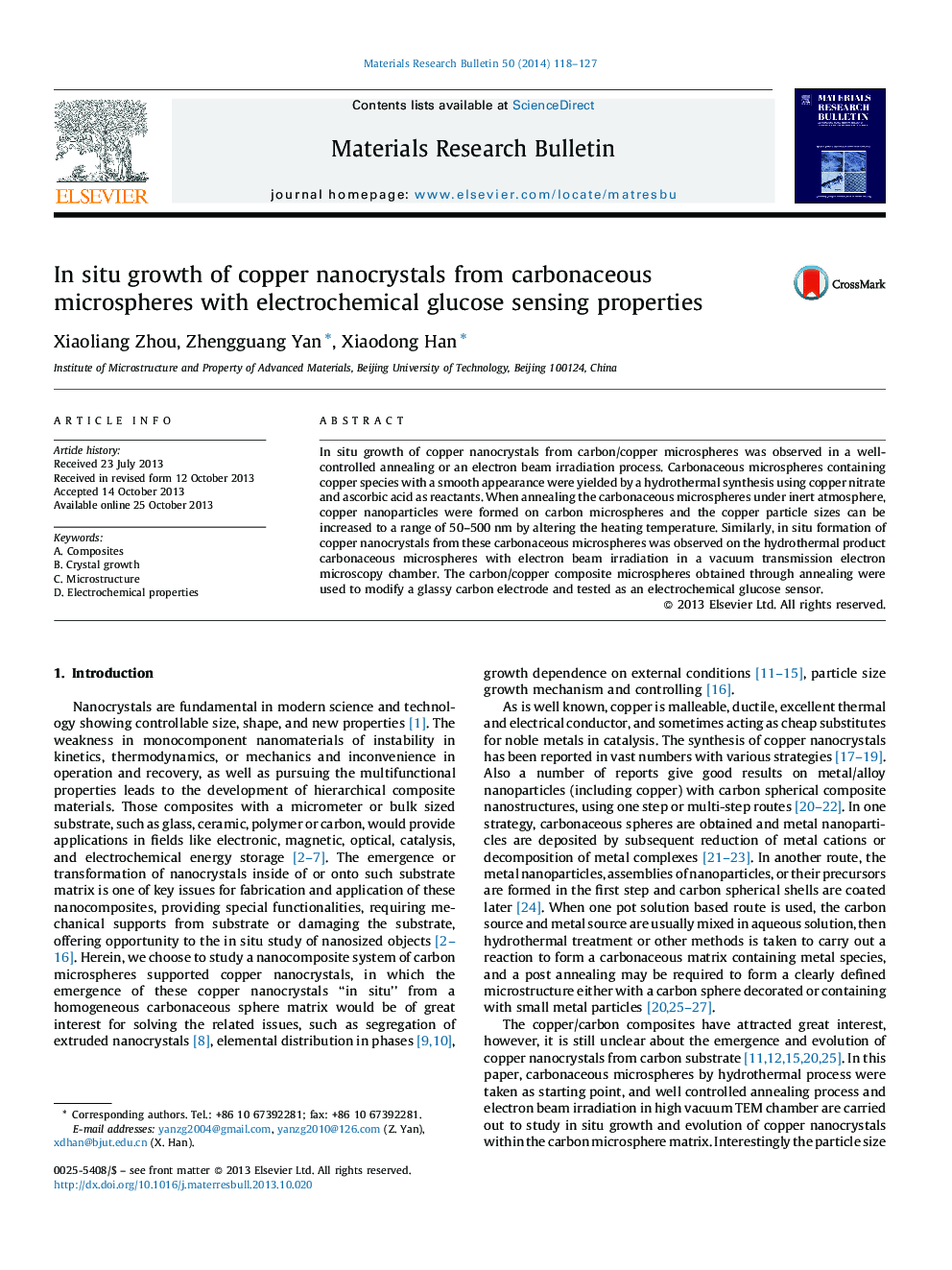| Article ID | Journal | Published Year | Pages | File Type |
|---|---|---|---|---|
| 1488498 | Materials Research Bulletin | 2014 | 10 Pages |
•We synthesized carbonaceous microspheres containing non-nanoparicle copper species through a hydrothermal route.•By annealing or electron beam irradiation, copper nanoparticles would form from the carbonaceous microspheres in situ.•By controlling the annealing temperature, particle size of copper could be controlled in the range of 50–500 nm.•The annealed carbon/copper hierarchical composite microspheres were used to fabricate an electrochemical glucose sensor.
In situ growth of copper nanocrystals from carbon/copper microspheres was observed in a well-controlled annealing or an electron beam irradiation process. Carbonaceous microspheres containing copper species with a smooth appearance were yielded by a hydrothermal synthesis using copper nitrate and ascorbic acid as reactants. When annealing the carbonaceous microspheres under inert atmosphere, copper nanoparticles were formed on carbon microspheres and the copper particle sizes can be increased to a range of 50–500 nm by altering the heating temperature. Similarly, in situ formation of copper nanocrystals from these carbonaceous microspheres was observed on the hydrothermal product carbonaceous microspheres with electron beam irradiation in a vacuum transmission electron microscopy chamber. The carbon/copper composite microspheres obtained through annealing were used to modify a glassy carbon electrode and tested as an electrochemical glucose sensor.
Graphical abstractIn situ growth of copper nanoparticles from hydrothermal copper-containing carbonaceous microspheres was induced by annealing or electron beam irradiation. Obtained micro-nano carbon/copper composite microspheres show electrochemical glucose sensing properties.Figure optionsDownload full-size imageDownload as PowerPoint slide
